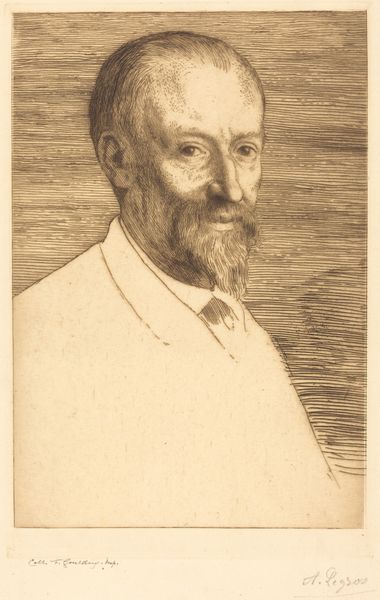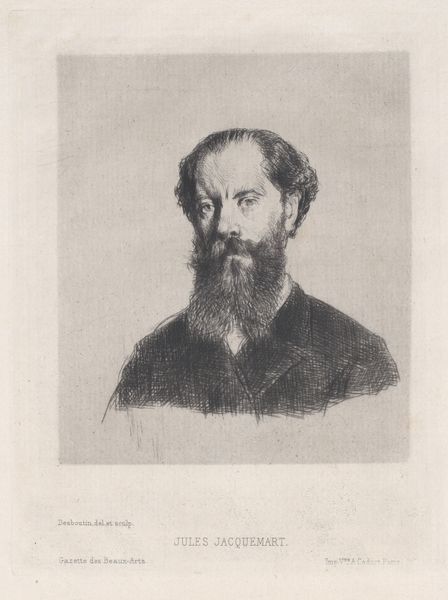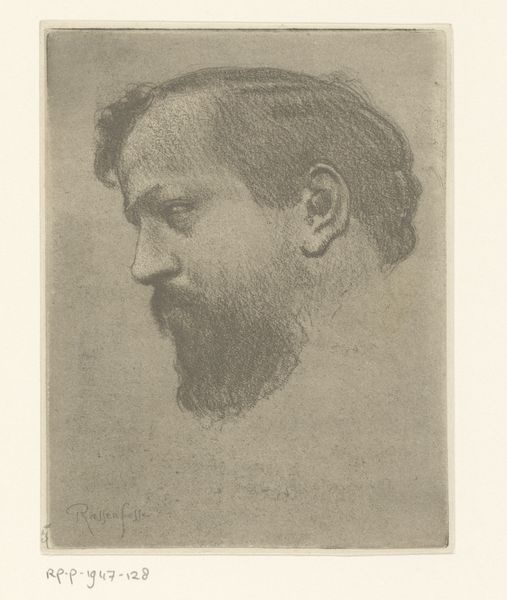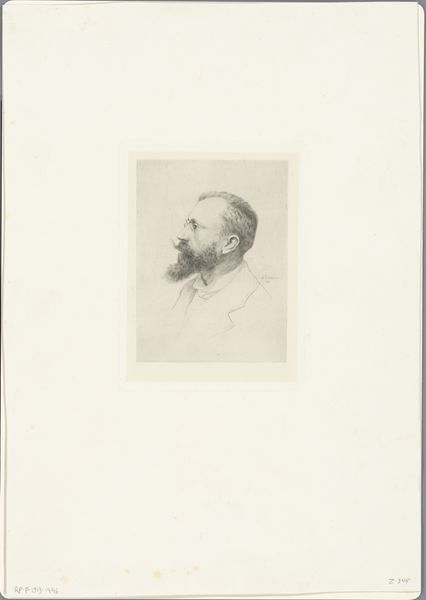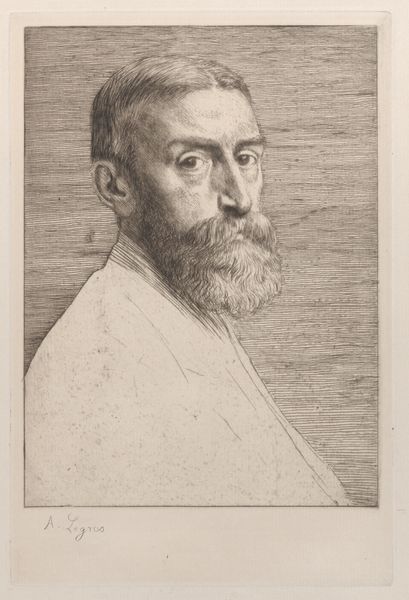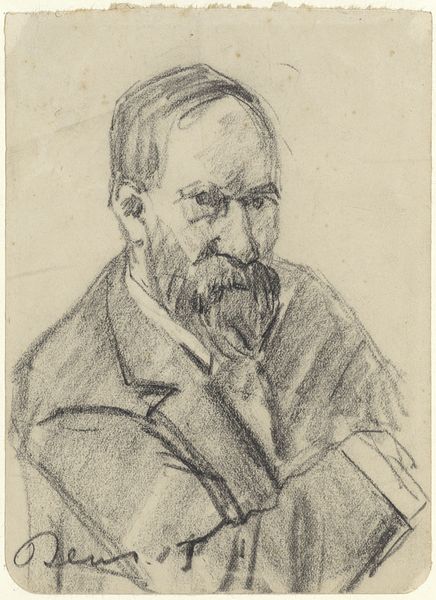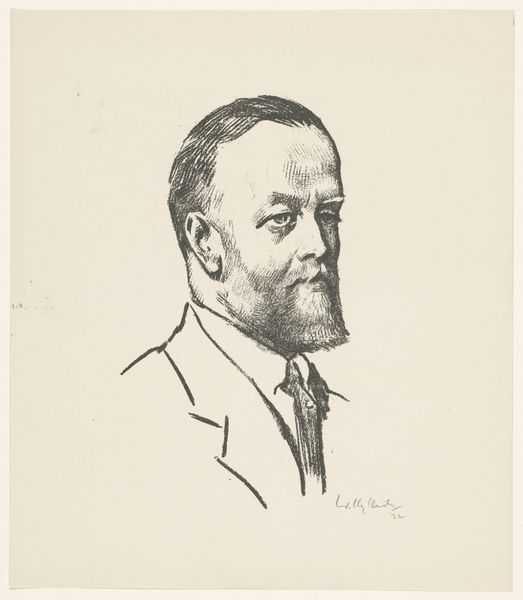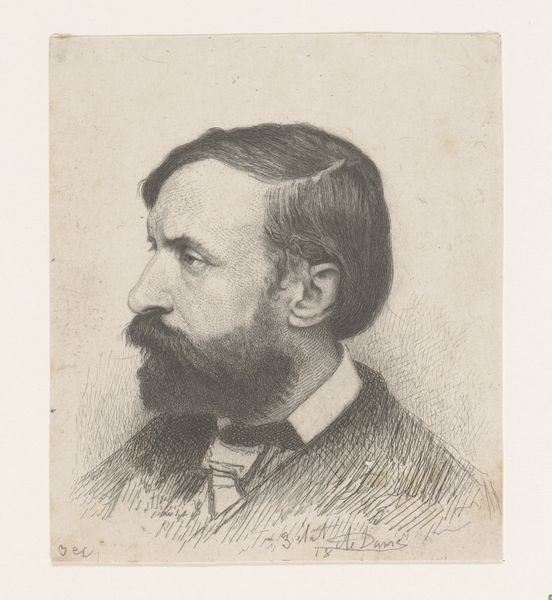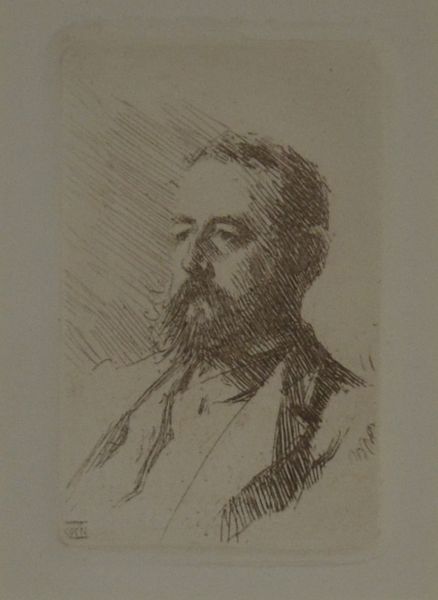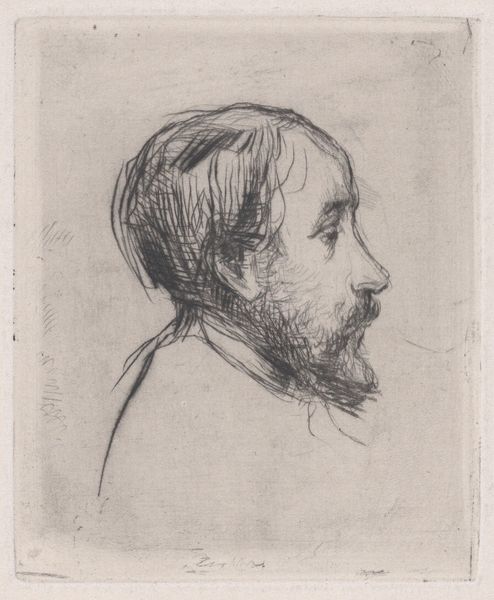
drawing, print, etching, graphite
#
portrait
#
drawing
# print
#
etching
#
pencil drawing
#
graphite
#
realism
#
monochrome
Dimensions: Sheet: 16 9/16 × 11 15/16 in. (42 × 30.4 cm) Plate: 6 1/4 × 4 5/8 in. (15.9 × 11.8 cm)
Copyright: Public Domain
Editor: Here we have Marcellin Desboutin’s etching, "Portrait of an unknown man," likely created sometime between 1860 and 1899. The monochromatic tones and sketch-like quality give it a rather melancholic feel. How do you interpret this work, especially considering its historical context? Curator: This piece compels us to consider the power dynamics inherent in portraiture of the period. Who was this man, and why was his image captured, yet his name lost? The anonymity raises questions about social class and visibility. Was Desboutin perhaps commenting on the erasure of certain identities within the grand narrative of the Belle Époque? Consider the rapid social changes and anxieties of that time; how might this portrait reflect them? Editor: That's fascinating! I hadn’t considered the lack of identity as a deliberate statement. Could the ‘unknown man’ represent a broader segment of the population, rendered invisible by the dominant social structures? Curator: Precisely. The work functions as both a portrait and a social commentary, critiquing the historical forces that determine whose stories are told and remembered. Etching, as a printmaking medium, further emphasizes this idea of reproduction and dissemination of images, raising questions of who controls that process and for what purpose. Does the sketch-like quality make the portrait seem unfinished, and could that add to the narrative? Editor: That's insightful! Thinking about it that way, the "unfinished" quality adds to the sense of anonymity and erasure, as if the subject himself is fading from memory. I hadn’t thought about the medium itself contributing to that effect. Curator: Exactly. Analyzing art through this intersectional lens, by interrogating identity, power, and representation, enriches our understanding and fosters critical dialogue. Editor: I see the portrait in a new light. Thanks, I have learned a lot!
Comments
No comments
Be the first to comment and join the conversation on the ultimate creative platform.

